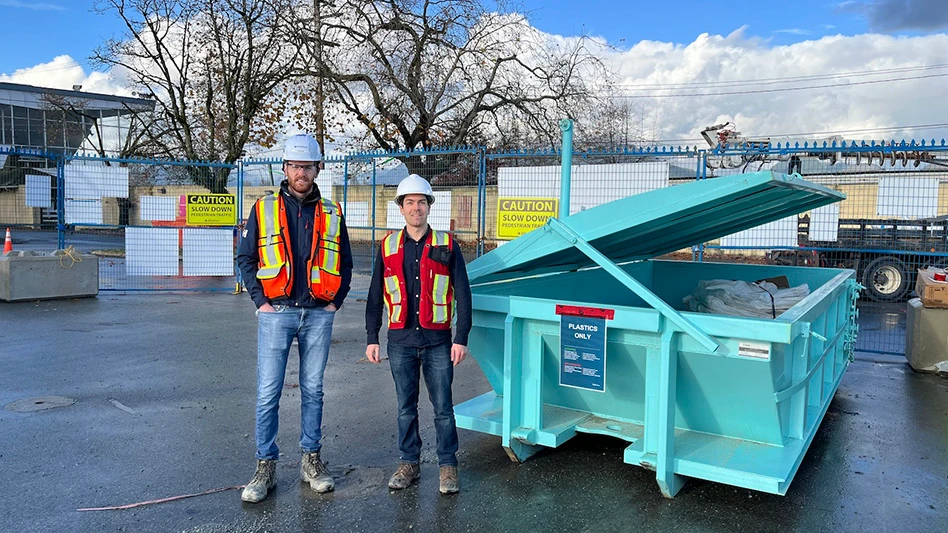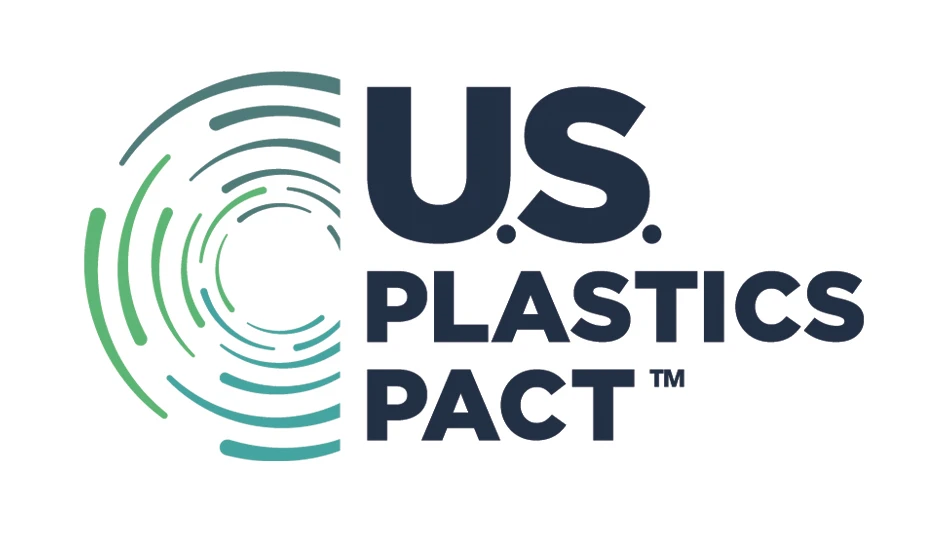
Unbleached recycled fiber pulp (URP), also referred to as recycled fiber (RCF) pulp, is a newer grade of market pulp that did not exist before 2017. It is produced using recovered paper that has been processed through state-of-the-art fiber stock preparation systems, formed and then dried or dewatered and shipped in bales or rolls. Wet lap pulp is the wetter version, therefore its transit time must be kept to a minimum.
Speaking during the Oct. 22 RCF Pulp/Mixed Paper Markets session as part of the 2020 Paper & Plastics Recycling Conference International, Bill Moore, president of Atlanta-based Moore & Associates, said making URP is similar to making other types of paper. The process starts with a recovered paper pulper and then moves to stock preparation. The process changes a bit, though, when it reaches the pulp machine because URP machines make a thicker product than other paperboard machines.
URP can incorporate two different grades of recovered paper. Moore said brown URP uses about 70 to 100 percent old corrugated containers (OCC), with mixed paper making up the remainder. Brown URP can be used to make linerboard. Gray URP uses between 70 to 90 percent mixed paper, with OCC making up the remainder. Gray URP can be used to make boxboard, uncoated recycled board (URB) and corrugated medium.
“Looming on the near horizon is the total ban of imported recovered paper, scheduled for the beginning of 2021.” – Bill Moore, president of Atlanta-based Moore & Associates
Production of URP compared with other pulp grades is relatively small at only 2 million metric tons, or 2.2 million short tons, per year. Production of global unbleached kraft pulp, which is the virgin form of URP, is 3 million metric tons per year, or 3.3 million short tons, while global bleached market pulp production totals 50 million metric tons annually, or 55.1 million short tons, Moore said.
While production of URP is smaller than that of its virgin counterparts, it is growing and will continue to grow in the near-term future, he added, fueled by China’s need.
URP growth driver
Before National Sword went into effect in China, that country was a major importer of recovered paper, which was used to make packaging. In 2016, the country imported 29 million metric tons, or nearly 32 million short tons, of recovered paper to supply its papermakers, Moore said. In 2015, the U.S. exported about 16 million short tons of recovered paper to China.
However, since China implemented its National Sword policy, it has been steadily reducing its recovered paper imports.
“Looming on the near horizon is the total ban of imported recovered paper, scheduled for the beginning of 2021,” Moore said.
In 2019, China imported 5.8 million short tons of recovered paper from the U.S. That figure is expected to decline to 4.2 million short tons this year. In 2021, when China stops importing recovered paper altogether, the country’s papermaking industry likely will face a supply shortfall of 13 million metric tons, or 14.3 million short tons. He said this could lead to reduced operating rates and revenue reductions for papermakers in China.
“All signals are that this ban is going to take place,” Moore said. “As we get further in the year, the signals only get stronger. While at one time we wondered whether preconsumer grades, such as corrugated box cuttings such as DLK (double-lined kraft), would be exempted, we’re not getting any message on that now.”
Moore continued, “Recycled fiber pulp will not, however, be affected because it’s such a product grade.” He said that should drive investment in URP units in the U.S., Pacific Rim and other regions around the world.
In addition to importing URP from other Asian countries and the U.S., Moore said China is looking at other alternatives to make up that 13 million-metric-ton fiber shortage:
- increasing its internal recovered paper collection, though China does not generate enough boxes to make up the demand shortfall and the quality of this fiber is not as high as that of U.S. imports;
- importing unbleached kraft pulp, but this is an expensive alternative to importing recovered paper;
- importing linerboard, medium and containerboard;
- planting trees, primarily tropical hardwoods, and importing softwoods; and
- increasing the use of alternative fibers, such as bamboo, bagasse and wheat straw.
China’s URP imports have tripled this year compared with 2019. For the first eight months of 2020, China imported about 1.5 million tons of URP compared with only 500,000 tons in the same period in 2019. Moore said these figures are somewhat small but increasing, and some projects are planned that will produce URP in the near-term future. (See the sidebar above for a detailed list.)
In addition, pricing for URP is rising. Moore referenced Fastmarkets RISI’s PPI Pulp & Paper Week, which reported that URP prices were higher in October than at any point in the last year. According to that publication, in January, URP pricing ranged from $280 to $340 per metric ton when shipped to China’s main ports. It has increased about $40 per metric ton since then.
Projects in the pipeline
Chinese companies are investing in URP projects, many of which are in Southeast Asia, while a few are in the United States. According to data from Moore & Associates, the largest suppliers of URP to China this year have been Laos, Taiwan, the United States, Myanmar and Malaysia.
Moore said Chinese paper companies—such as Nine Dragons and Lee & Man—are operating the most URP mills. A few American companies, including North Pacific Paper Co. (NORPAC), have invested in URP machines, and a few Asian companies also are adding capacity to produce recycled fiber pulp.
He said Nine Dragons, Lee & Man and Shanying International, all China-based companies, have noteworthy investments planned in URP mill capacity that are coming online within the next two years at sites in Asia and the United States. Nine Dragons’ and Shanying International’s URP capacity in the U.S. is slated to come online by next year. However, Moore said, their locations are interesting.
“When one looks at the locations of these [four] mill projects, one kind of scratches their head and says, ‘If these companies are really looking to export, Biron, Wisconsin, and Wickliffe, Kentucky, are not exactly near any U.S. container ports,” he said, adding that freight costs for the Maine and West Virginia locations also are high. Moore speculated that Nine Dragons and Shanying International could have chosen these U.S. sites based on available assets for sale as well as reasonable purchase prices.
Three U.S.-based development companies—Empire Recycled Fiber, Kamine Development Corp. and Total Fiber Recovery—also have URP projects underway.
Some projects that have been announced recently are more speculative, such as Nine Dragons’ plan to build URP capacity in India that could produce some 500,000 metric tons (roughly 551,000 short tons) yearly, and a Shanying International project in Southeast Asia that would produce almost 800,000 metric tons (roughly 882,000 short tons) yearly.
Additionally, Total Fiber Recovery and Kamine have announced plans to each build their second URP mills, but those locations and completion dates were unknown as of mid-October, Moore said.

Explore the December 2020 Paper Recycling Supplement Issue
Check out more from this issue and find your next story to read.
Latest from Recycling Today
- STG selects SolarPanelRecycling.com as exclusive recycling partner
- Toyota receives $4.5M to support a circular domestic supply chain for EV batteries
- Greyparrot reports 2024 recycling trends
- Republic Services opens Colorado hauling facility
- ABTC awarded $144M DOE grant
- Massachusetts awards $4 million in waste and recycling grants
- Study: Solid phase manufacturing transforms recovered aluminum into high-performance alloys without melting
- Tata Steel to supply equipment maker JCB





